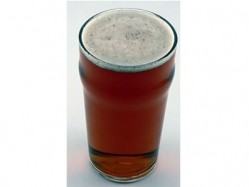ASK THE EXPERTS
How to keep beer fresh

It can take months to brew a good cask of beer and real ale, traditionally brewed and allowed to mature naturally in the barrel should be carefully looked after. The live yeast will continue to condition the beer, enriching the flavours and character right up until the moment it’s poured into the glass. But however great the beer, if your lines aren’t perfectly clean the final journey from cask to glass can ruin a perfect pint.
Why it is important to keep lines clean
Poorly cleaned beer lines can harbour bacteria that make your beer cloudy and taste of vinegar, smell faintly of rotten eggs or butterscotch.
The inner surface of the beer lines is prone to bacterial attachment and accumulation. Once microbes get going they secrete extra cellular polymers such as polysaccharides and glycoproteins creating bio-films where they can thrive more happily.
And ‘beer stones’ can accumulate too. Calcium contained in the grains and water used in the brew can combine with the oxalic acids or salts present in the hops to produce deposits of calcium oxalate. These ‘beer stones’ can build up and flake off, adding little brown or grey flakes to your pint.
Whilst these probably won’t cause any harm they will taint the taste of your beer and without a doubt, one of the quickest ways to lose trade in the drinks industry is to serve a beer of inconsistent quality. It’s hard to evaluate and therefore difficult to measure but you should consider the impact of a poorly presented pint on sales and returning customers.
Furthermore, as expectations of beer quality and food hygiene rise it is essential that managers and owners ensure they meet all criteria for optimum cleanliness – and that includes the areas you can’t see as well those on show.
How to keep lines clean
Manual beer line cleaning
If carefully undertaken on a weekly basis traditional manual beer line cleaning will keep your lines perfectly clean. Lines should be thoroughly rinsed first with clean water, soaked in cleaning fluid (correctly diluted) for 30 minutes and rinsed again to remove any traces of chemicals.
It’s a time-consuming process that can only be carried out when the bar is closed and if following this method, staff should be trained to ensure they follow correct cleaning procedures and handle the cleaning chemicals properly.
From an economic perspective, one of the downsides of manual cleaning is that it involves throwing away whatever beer is in the lines on cleaning day – and the longer the lines the more you waste.
Automated beer line cleaning
An appropriate automated line-cleaning system replicates the steps of a manual clean but uses precise timings for each step ensuring accurate and consistent chemical dilution. The cleaning times are shorter and you have a choice of programmes from quick line rinse when you change a cask to super cleans for heavy yeasty keg beers.
Cleans can be done on one product with multiple taps over a number of bars. Some systems are operated from a bar control unit thus reducing the number of trips to the cellar.
Automated systems are easy to use by any member of staff, avoiding the need to handle and mix hazardous cleaning chemicals. With permanent bar drainage they eliminate slipping hazards and spillages by removing the need for jugs and buckets being carried from tap to sink.
In a difficult economic climate maximizing profit has to be high on the agenda and reducing wastage has to be a big advantage – installing an automated system enables you to use the system when the bar is open and to serve the line beer before doing the clean, reducing wasted beer to almost nothing.























